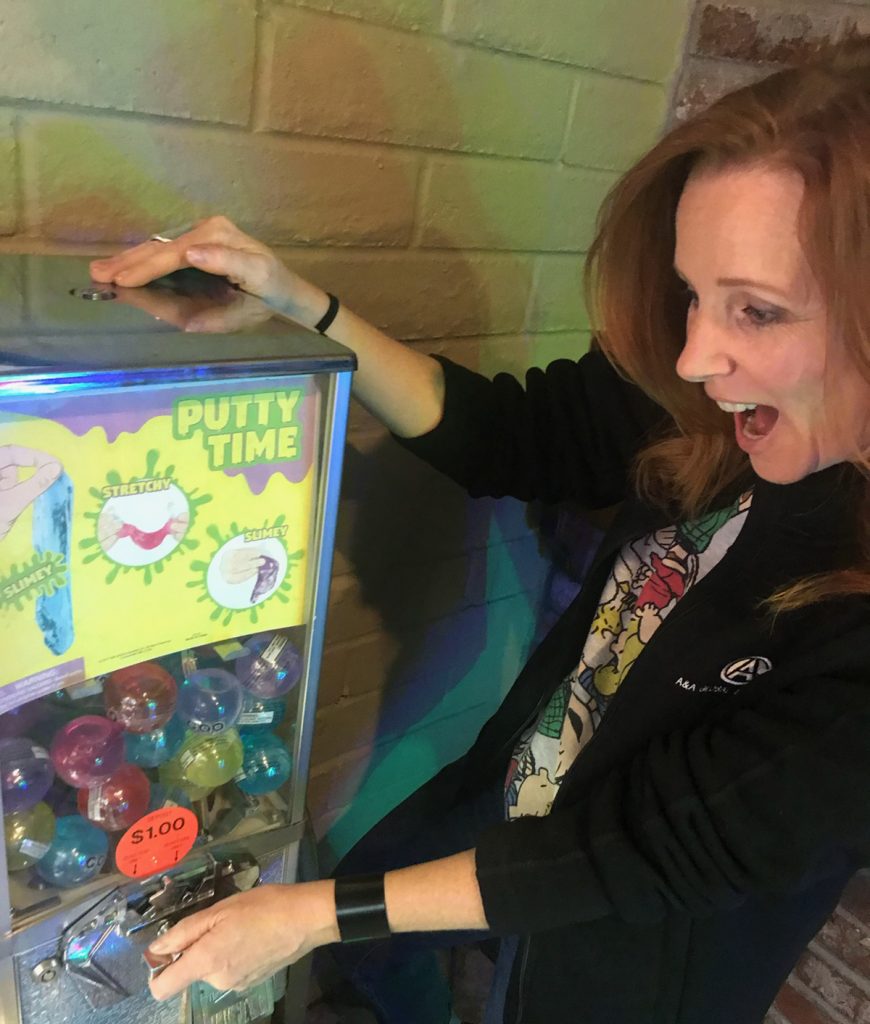New Chapter for Bulk Vending
A&A Global’s Rosenberg Spotlights Operator Opportunities
by Hank Schlesinger

Bulk vending, that most adaptable and ubiquitous of the coin-op segment, is on the move again. Music and game operators are discovering the joys of bulk vending while traditional bulk operators continue to transition into new equipment categories, such as skill cranes and ATMs. These changes, largely taking place in the wake of what many have viewed as a historic decline of the bulk industry, are subtle but pervasive.
It seems the demise of some well-known bulk equipment manufacturers as well as suppliers, cannot keep the industry down. The bulk vending boom, which featured the dramatic rise of premium merchandise, is long gone. Also vanished are many of the mid-sized, multi-state bulk operators. It does not seem all that long ago that Homies were pushing the industry to record earnings. And then the party ended with the Consumer Product Safety Improvement Act of 2008.
Interestingly enough, what’s left is not all gloom and doom. The industry continues to offer compelling products. These include high-profile licenses featuring iconic characters and brands from movies, television and sports, as well as a complement of original premium series of innovative novelties. While demand for vending machine products may not be as strong as in those halcyon days of the past, it clearly remains steady.
It’s What’s Happening
The bulk vending industry, in general, is returning to its roots of smaller, more efficient operators with local routes aimed at independent businesses. Bulk vending is also finding a new home in coin-op amusement, FEC, and even ATM routes. In this new role, bulk is playing an increasingly important part as an ancillary and reliable profit center.
“The machines are easily transported from location to location, have a small, unassuming footprint, and require no electricity,” said A&A Global’s Rachel Rosenberg. “With virtually any size of investment – large or small – would-be entrepreneurs and established operators are discovering bulk vending as a money-making opportunity.”
As Rosenberg is quick to point out, there is a configuration of bulk heads to meet the needs of virtually every location, regardless whether it is just a few machines or several hundred square feet for a fully functional, self-operated novelty center. And, too, the same familiar rules of placement apply for bulk as with other equipment; a formula that combines available square footage with foot traffic.
This kind of flexibility when it comes to configuration is one of the cornerstone successes of bulk vending and a primary reason why bulk has a historically quick ROI. “I think a safe bet for ROI is about 12 to 18 months,” said Rosenberg. “That’s not an unusual time frame for bulk vending. You should be able to make your money back quickly, so aside from the usual costs of doing business, the machine is just making money for you.”
Who’s Doing What
As Rosenberg explained, bulk vending has worked its way into some unlikely routes. “Most operators are offering a lot of services,” she said. “That’s why the industry is morphing for the next generation because bulk vending conveniently fits into every entertainment mix. The industry recognizes operators of ATM machines, skill cranes, merchandise machines and even snack and soda full-line vending expanding their reach into bulk. This trend only continues to grow.”
Bulk vending machines are famously easy to operate and are available in a wide range of configurations, while at the same time, are able to offer a wide enough assortment of merchandise fit for every demographic and every type of location where families congregate.
“You’d be surprised at the diversity of customers who buy our products. It’s not just for kids anymore,” Rosenberg said. “Key product categories today include trendy tattoos, toy fashion accessories, and keychains that are beloved by anyone who drives a vehicle.”
Today’s products expand the customer demographic base beyond the yesteryear’s traditional market of pre-teens and tweens. Once the price points pushed to 75¢ and $1, new demographics seeped into the customer base that allowed suppliers to offer merchandise, as well as pop culture-forward items. Even simple items like toy bracelets and rings take on a whole new look for bulk vending’s next generation. These products opened up new opportunities when it came to locations. Suddenly bowling alleys, skating rinks, sports bars, and comic book shops became profitable stops. Bulk: it just isn’t just for little kids anymore.
According to some, this trend was started by the flat vend side of the industry, which first experienced success with more mature designs for both stickers and temporary tattoos. Tattoos and stickers, they say, acted as a test marketplace that definitively determined that older consumers would buy the right product from a “gumball machine.”
No longer simply just a trend, the expanded demographic is now a permanent and firmly established feature of the bulk vending industry. Millennials who grew up buying bulk products will continue to buy them if the right product is offered. It is notable that some bulk vending collectibles, specifically licensed products, have become popular among office workers who use them to spruce up a work area, while stickers have become a common feature on laptops and other electronic devices.
The range of product and variety of potential locations necessitates operators looking to get into bulk vending know their customer base.
“There are a lot of skill crane operators who do very well with bulk vending,” Rosenberg said. “They know the demographics of their locations and merchandise.” However, as Rosenberg is quick to note, even with cross-over between skill cranes and bulk vending customers, one category does not cannibalize the other because of the play-purchase platform and different price points.”
Building Density
As Rosenberg sees it, today’s bulk vending is a way for operators to build density within a specific location and then expanding that into a well-run route.
“For example, if you’re calling on your farthest location –– say 50 miles away from the office –– use that opportunity not only for servicing, but more importantly, locating. There’s always a lot of historically successful locations such as Chinese buffets, laundromats, restaurants, independent grocery stores, and mini marts. These are hassle free and great to supplement route income without increasing your operating costs.”
Rosenberg and other bulk vending professionals correctly point out that a rack of bulk machines won’t compete with a busy skill crane. In the right locations, the additional profits from a bulk rack are steady month after month after month, making them an important part of a coin-op business.
It is also interesting to note that service schedules, typically 30 days for a bulk rack, are easily aligned with the service schedules of other equipment categories. Planned correctly, personnel can service a “route filler” bulk rack in a nearby secondary location without moving their vehicle. It’s just a matter of dumping the coins out and the product in.
Trade Tricks
“For an operator thinking about adding bulk vending to an existing route, I would suggest placing just five to 10 locations to start,” advised Rosenberg. “That gives you better buying power with suppliers and the ability to rotate inventory, along with some really great choices of what products to feature in any given location.”
Rosenberg added that five to 10 machines also boosts the bottom line to where the investment in time and money makes the scenario profitable. As industry veterans well know, this business is a numbers game when it comes to machines and locations, something that is no less true today.
Rosenberg also advises stocking minimal inventory, particularly when it comes to trend-based items. As she explains, it is better to be short on high-demand inventory than having leftovers once the trendy product inevitably wanes. Standards such as gumballs and high-bounce balls are less time sensitive. She also suggests frequent rotation of capsuled merchandise, a practice that should be familiar to skill crane operators, as well as anyone who understands retail merchandising.
As Rosenberg and others in the industry point out, this new chapter in bulk can be exciting. The industry is showing signs of revitalization that includes increased membership in the NBVA and a more substantial presence at the annual tradeshow. And while much of this new activity is fueled by innovations implemented during the last industry boom, the impact of bulk vending’s new role has yet to be fully realized when it comes to products and equipment.
Stay tuned!

